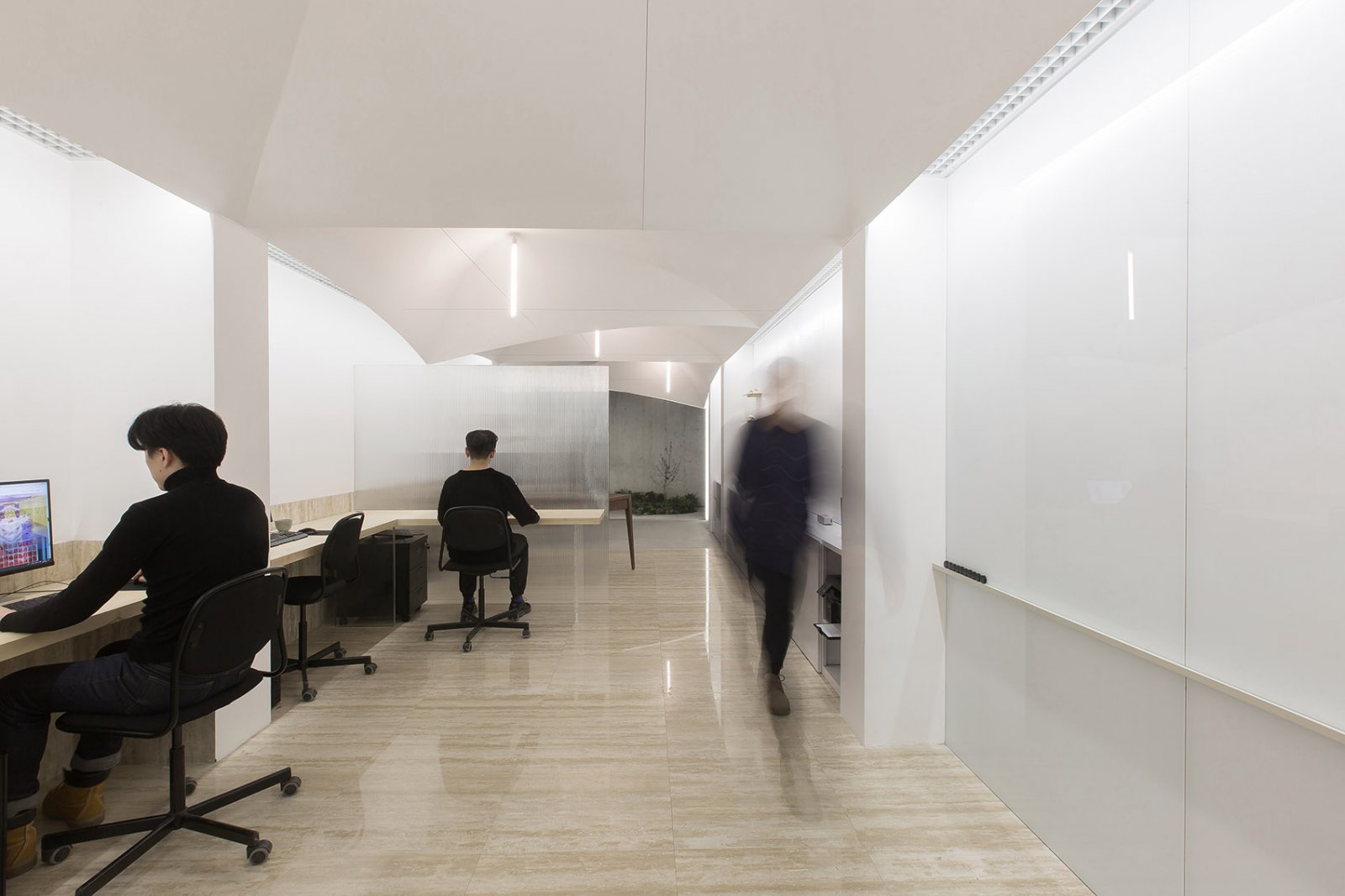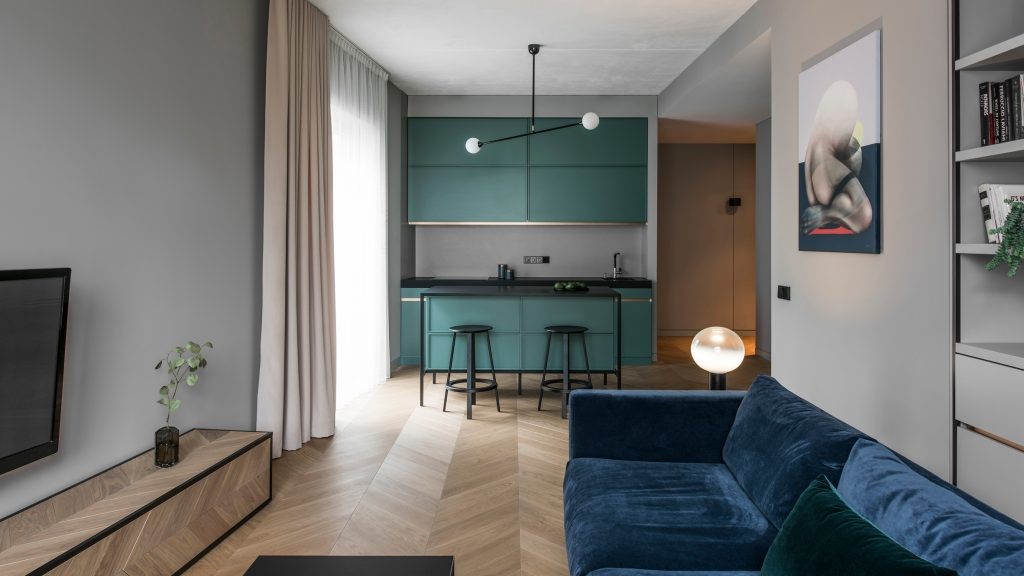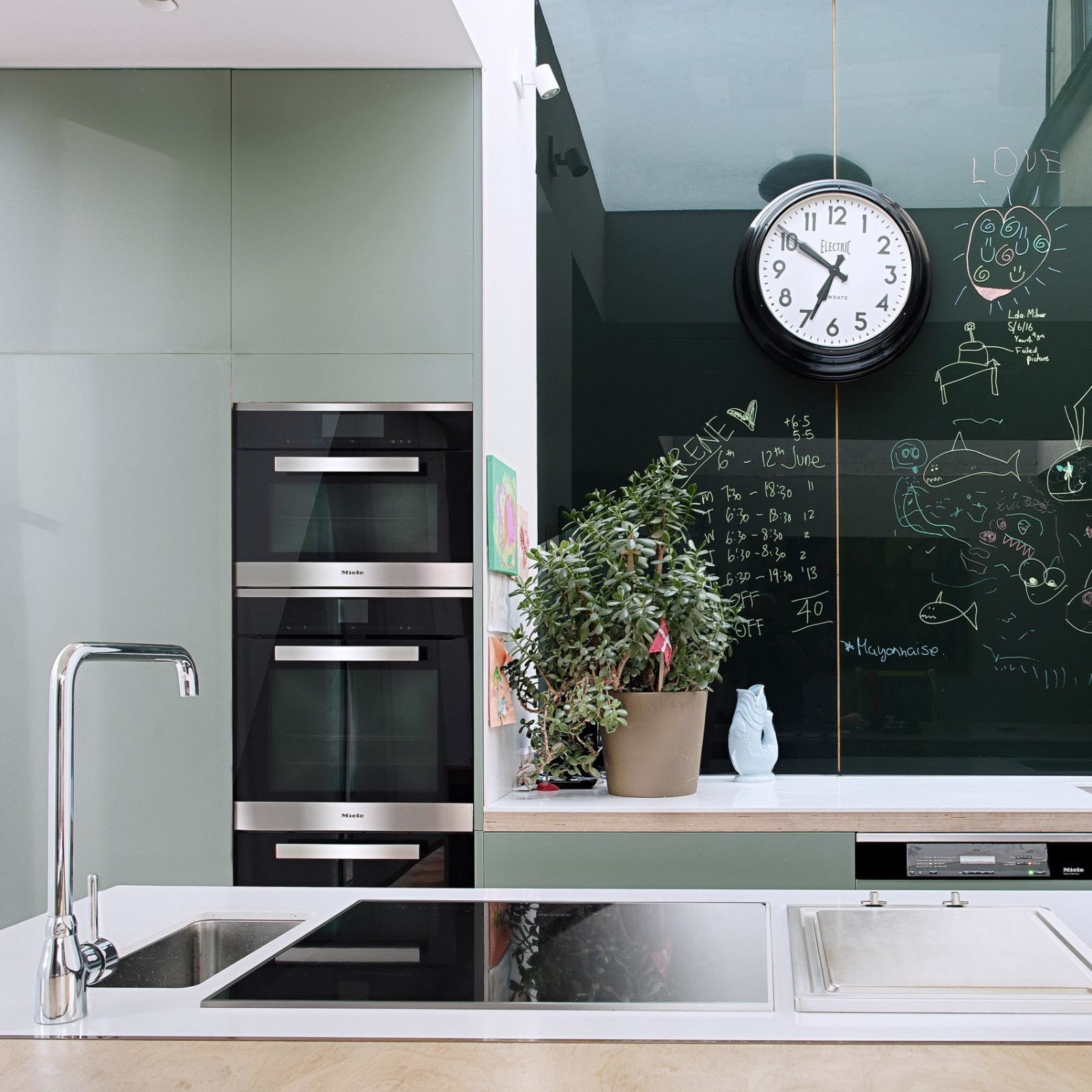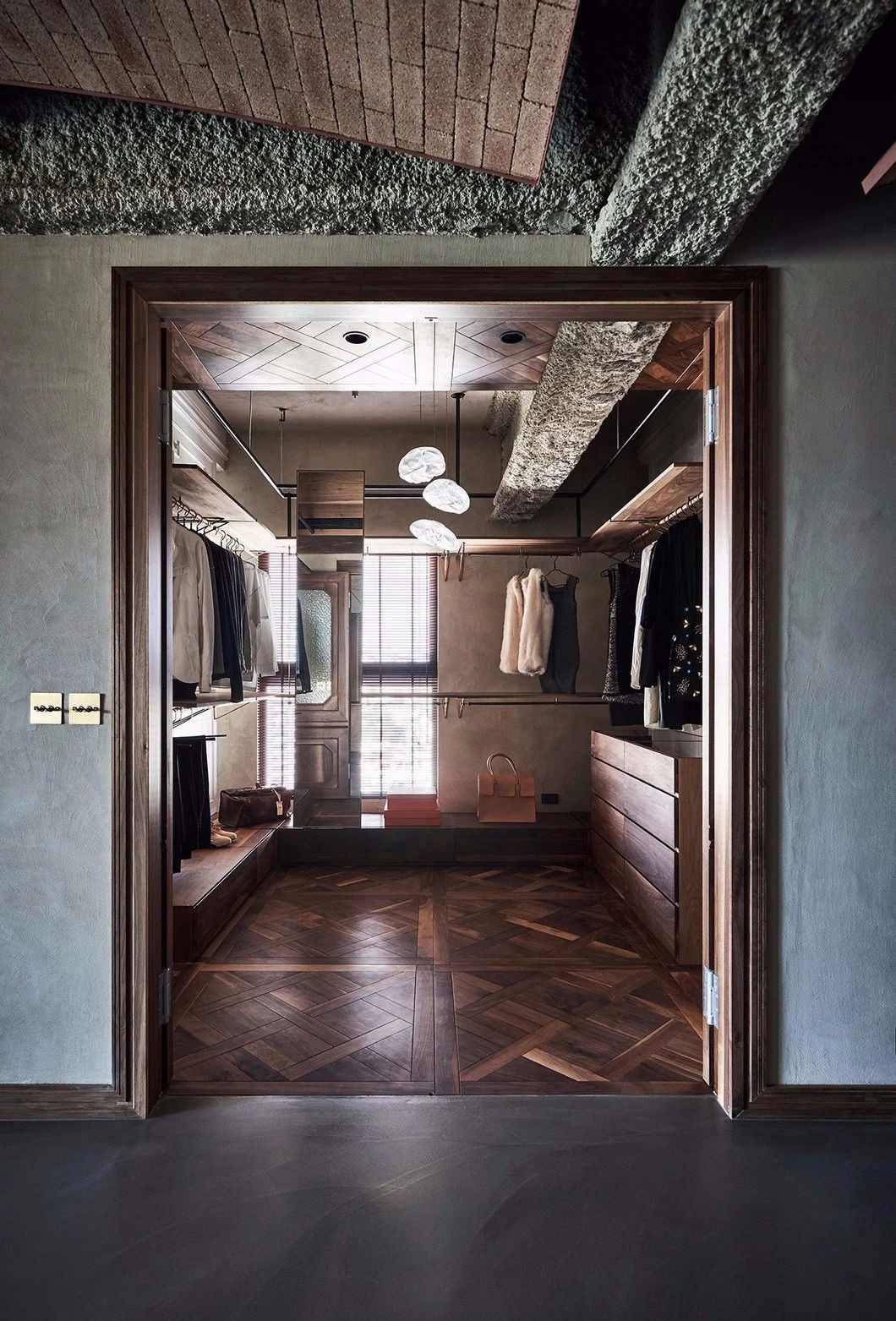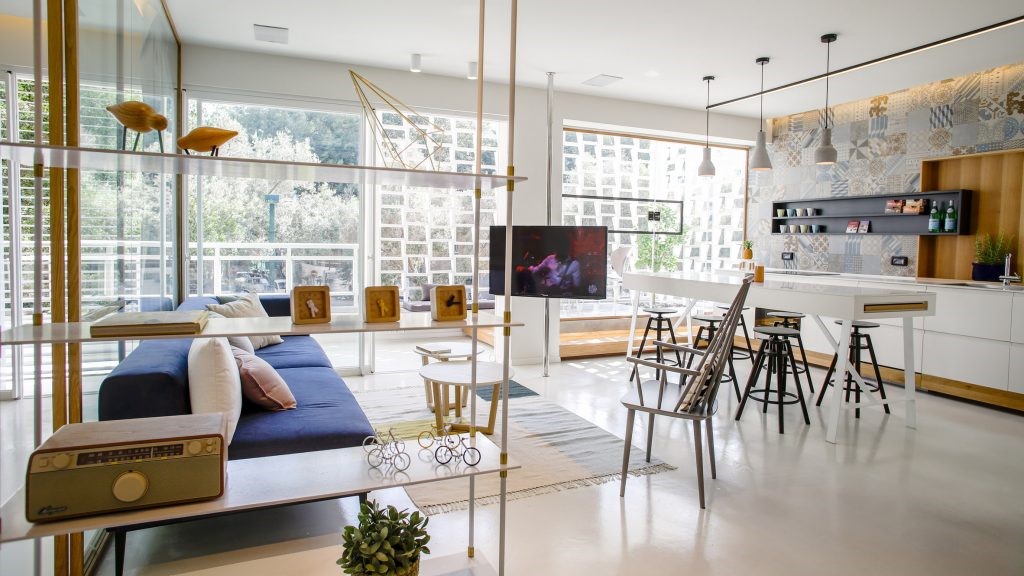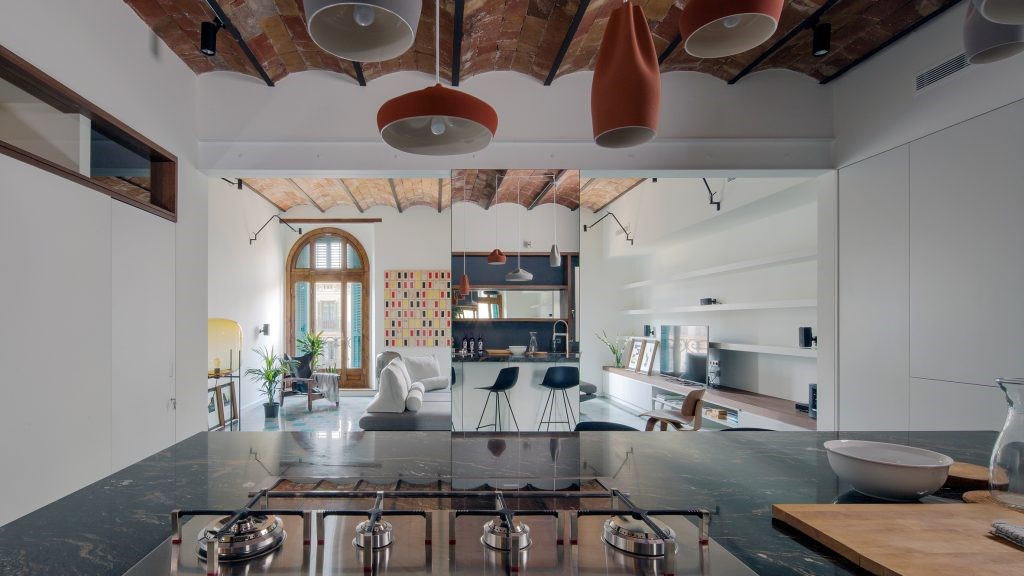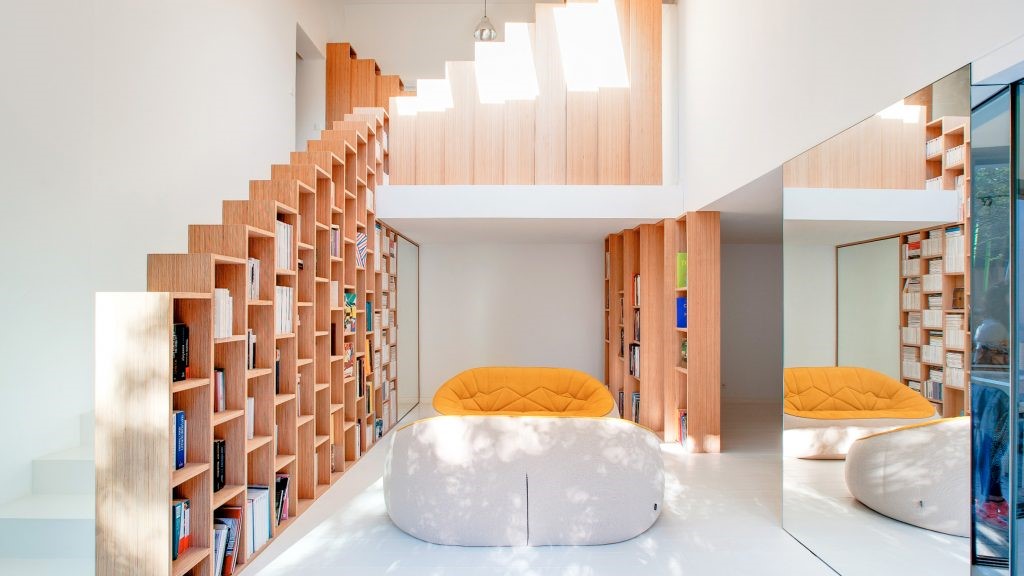Fun
2016-06-16 15:00
© Gidon Levin
吉顿·莱文(Gidon Levin)


架构师提供的文本描述。一个从50年代到70年代的丰富美学和当前设计的“整洁”的交界处会发生什么?当极简的功利主义木匠遇到精心制作的物品和东方的灵感?当温文尔雅和热爱自然的人结合在一起时,是什么火花?这个世界的交汇处在特拉维夫新设计的Nahalat Yitzhak公寓里。
Text description provided by the architects. What happens at the junction of a design rich aesthetic from the 50s through the 70s and the “cleanliness” of current design? When minimalist utilitarian carpentry meets crafted objects and Oriental inspiration? What sparks when urbanity and nature loving coalesced? This intersection of worlds is found in the newly designed Nahalat Yitzhak apartment in Tel Aviv.
© Gidon Levin
吉顿·莱文(Gidon Levin)


这套公寓里住着一位著名的时装设计师和他的合作伙伴,一位媒体人物。他们要求提供功能和宽敞的空间,以及充足的存储空间。规划公寓引发了许多关于生活方式、实际用途、休闲、自然照明和工作要求的讨论。装修前,公寓有两间卧室,一间客厅和一间独立的厨房;屋顶地板有一个10平方米的阁楼。楼下的设计理念创造了一个不受限制的、功能性的空间-将建筑的围护墙视为国内枢纽的外壳。定制的木工和焊接单元构成内部空间,因为每个功能都有一个“包含”它的单元。此外,在屋顶地板上还增加了40平方米的轻型建筑(钢框架和铝屋顶)。
The apartment is home to a renown fashion designer and his partner, a media figure. They requested functional and spacious spaces, as well as ample storage. Planning the apartment instigated many conversations regarding lifestyle, practical use, leisure, natural lighting, and work requirements. Before the renovation, the apartment had two bedrooms, a living room and a separate kitchen; the rooftop floor had a 10 m2 attic. The design concept for downstairs led to the creation of one unrestricted and functional space – by perceiving the structure’s enveloping walls as an outer shell for a domestic hub. Custom-made carpentry and welding units structure the inner space, as each function has a unit that “contains” it. In addition, 40 m2 of lightweight construction (steel frame and aluminium roof) were added to the rooftop floor.
© Gidon Levin
吉顿·莱文(Gidon Levin)




施工过程一开始,拆除了入口层的所有内墙,拆除了地板、洗手间和窗户,并创造了一个完全透明的空间,只有一根建筑水泥柱除外。水暖、电线和铝制品也同样被更换。翻修费用总额约为200美元,大部分用于木工和焊接;74平方米的一楼现在包括客厅、厨房、餐桌(设有封闭的客人浴室),以及主卧室单元,配有步入式壁橱和浴室。64平米的屋顶有一个额外的休息室,厨房和小餐桌,以及一个客房和洗手间。该参数附有一个24平方米的铺面阳台。
The construction process began by demolishing all the inner walls on the entrance level, dismantling the floor, washrooms and windows, and creating a totally clear space, with the exception of one constructive cement pillar. Plumbing, electric wiring and aluminium work were likewise replaced. Renovation costs totalled around $200K, most going to carpentry and welding; The 74 m2 first floor now consists of an open space for the living room, kitchen, dining table (with a closed guest bathroom), as well as the master bedroom unit with a walk-in closet and bathroom. The 64 m2 rooftop floor holds an additional lounge, kitchen and small dining table, as well as a guest bedroom and washroom. A paved balcony of 24 m2 is annexed to the parameter.
黑色的铁门通向一个小的入口大厅,它存在于一个大型服务壁橱和外墙之间的空隙中。公寓独特的元素之一是地板到天花板的壁橱,形状在字母“L”中。壁橱是房子的中心,因为它的位置和体积,人们看到它立即和持续从空间中的每一个地方。
The black iron entrance door leads into a small entrance hall that exists in the gap between a large service closet and the outer wall. One of the unique elements of the apartment is a floor-to-ceiling closet, shaped in the letter "L". The closet is the heart of the house with regard to its location and volume, and one sees it immediately and continuously from every spot in the space.
© Gidon Levin
吉顿·莱文(Gidon Levin)


这个主要的木匠在它周围安排了各种不同的用途:入口大厅,客人浴室,客厅,餐厅,厨房,卧室和壁橱。它是双向的,既用作客厅的立面,也用作卧室(甚至客人浴室)的内立面。沿着这条路线,壁橱被用来制作食品和厨房用具、办公用品、书架、衣服和鞋子,甚至还用作机器人吸尘器的对接站。它也是通往空调、电力和照明系统的通道。壁橱是用天然竹板建造的,从地板和天花板上用黑色铝型材隔开。使用木材的自然色调作为一个临界质量的公寓受到50年代后期的美感,深受房客喜爱。
This main piece of carpentry arranges all different uses around it: An entrance hall, guest bathroom, living room, dining area, kitchen, bedroom and closet room. It is bidirectional, and is used both as a facade for the living space and as an inner facade for the bedroom (and even the guest bathroom). Along its line the closet is used for food and kitchenware, office supplies, bookshelves, clothes and shoes, and even as a docking station for the robotic vacuum cleaner. It also serves as a passage to the air conditioning, electricity and lighting systems. The closet is constructed with natural bamboo boards, separated from both floor and ceiling by a black aluminum profile. Using the wood with its natural tones as a critical mass in the apartment is affected by the late 50s esthetic, beloved by the tenants.
© Gidon Levin
吉顿·莱文(Gidon Levin)


客厅里摆着格子的米索尼扶手椅和一张灰色的沙发。三种不同高度的桌子填满了整个空间,所有这些都是用地窖木制成的,表面是环氧的,还有一条手工编织的乌兹别克地毯温暖着灰色的地砖。大窗户上放着黑色的木台子,上面装饰着古老的东方灯。野生非洲的图片,雕塑和各种植物完成了异国情调。客厅旁边是一个服装焊接单元,铁网和黑色网,用来展示植物和装饰物,并为娱乐和音响系统做准备。厨房被设计成不同的单元并排设置,每个单元都有自己定义的用途,而在它们之间放置了一张餐桌。一个黑色的大理石表面坐落在一个定制的有腿的木制装置上,里面有橱柜、抽屉和烤箱。一种定制的不锈钢部件被用作“湿单元”,其中有一个水槽和一个隐藏的洗碗机。在它旁边,我们找到了一个开放的“自由式”存储单元。冰箱在主壁橱里筑巢。同一间大壁橱里的一扇隐蔽的门通向主卧室。卧室周围是翼门壁橱和抽屉,以最大限度地存储。壁橱的末端是建筑水泥柱,石膏是从那里剥落的,而且是粗略的。柱子和外墙之间是一个透明的玻璃隔板,允许光线和厨房的内景。衣橱的前部通向更衣室,末端是一个天花板-高开的鞋子储存单元。在更衣室的右边,用透明玻璃隔板隔开,可以找到洗手间。白色的圆柱形水槽被放置在木制品的竹板上,放在一个带有黑色漆的铁架上。一对镜子,黑色的铁三方角,悬挂在他们的上方。
The living room is furnished with checkered Missoni armchairs and a grey couch. End tables of three different heights fill the space, all made of mapa-burl wood with an epoxy finish, and a hand-woven Uzbek rug warms the grey floor tiles. Black wood podiums were placed the big window, adorned with antique Oriental lamps. Pictures of Wild Africa, sculptures and a variety of plants complete the exotic look. The living room is bordered by a costume welding unit, iron and black net, used to exhibit plants and decorative pieces and prepared for an entertainment and sound systems. The kitchen was planned as different units set side by side, each of which has its own defined purpose, while between them a dining table is placed. A black marble surface sits on a custom-made wooden unit with legs, which contains cupboards, drawers and an oven. A custom-ordered stainless steel component is used as a “wet unit”, in which a sink and a hidden dishwasher are contained. Beside it we find an open storage unit for “freestyle” storage. The fridge nests inside the main closet. A concealed door in the same large closet leads into the master bedroom. The bedroom is surrounded by wing-door closets and drawers for maximal storage. The closet ends at the constructive cement pillar, from which plaster was peeled and roughly. Between the pillar and the outer wall is a transparent glass divider, allowing for light and an inside view of the kitchen. The front of the closet leads to the dressing room, and ends as a ceiling-high open storage unit for shoes. To the right of the dressing room, separated by transparent glass dividers, one can find the washroom. White cylinder sinks were placed on a woodworked bamboo board, sitting upon a unit made of iron frames with a black paint finish. A pair of mirrors, with black iron tri-square-shaped corners, hang above them.
© Gidon Levin
吉顿·莱文(Gidon Levin)


用黑色油漆的钢做的螺旋楼梯通向屋顶的地板。这层楼的设计主要是为了住宿和工作-一个客厅和开放式厨房,旁边是卧室和洗手间。从地板到天花板的玻璃安装在生活空间周围。移动玻璃钢的计划是为了让人们完全打开它们,并利用厨房进行户外托管和园艺。阳台铺有“野蛮人”水泥砖,主要用作种植蔬菜、有机草药和观赏植物的绿色露台。从阳台上可以看到特拉维夫一个拥挤而人口稠密的城市景观。这种“白城”观与温室效应形成鲜明对比。
Spiral stairs made of black-painted steel lead up to the rooftop floor. This floor was planned mainly for hosting and work – a living space and open kitchen, beside a bedroom and washroom. Floor-to-ceiling glass vitrines were installed around the living space. The moving vitrines were planned so that one could open them completely and utilize the kitchen for outdoor hosting and gardening. The balcony was paved with “brutalist” cement tiles, and is mainly used as a green terrace for growing vegetables, organic herbs and ornamental plants. From the balcony, a crowded and densely populated urban view of Tel Aviv can be seen. This “White City” view contrasts the inner greenhouse effect.
© Gidon Levin
吉顿·莱文(Gidon Levin)




在规划过程中,重点放在了自然照明、“外部”公共空间与“内部”私人空间之间的关系以及内部空间。 公寓里的每一件物品都是精心挑选的:1970年代的铁框架上的皮椅、雅典的玻璃桌、古董灯、手工编织地毯、米索尼纺织品、安德鲁·马丁(AndrewMartin)的装潢。一只来自西藏的陶器壶,一幅私人收藏的原始油画等等。洗手间和浴室作为蓝色和青绿色的焦点,打破了木材和黑色的主题-暴露在主空间一旦开门。
During the planning process, an emphasis was placed on natural lighting, the relationship between the “outer” public spaces and the “inner” private spaces, as well as interior. Every item in the apartment was carefully selected: Leather chairs on an iron frame from the 1970s, glass tables, vintage lamps found in Athens, hand-woven carpets, Missoni textile, Andrew Martin upholstery, an earthenware pot from Tibet, an original oil painting from a private collection and more. The washrooms and bathroom serve as blue and turquoise focal points that break the wood and black theme--exposed to the main space once the door is opened.






































Architects K.O.T project
Location Tel Aviv-Yafo, Israel
Category Apartment Interiors
Area 138.0 sqm
Project Year 2016
Manufacturers Loading...

















